What Is The Best Film Equipment For My Production?
This seems to be the big question for filmmakers. What is the best film equipment for my production?
Whether you’re just starting out or even if you’re an experienced filmmaker, you may be wondering about this and it can seem daunting at times. It’s often what prevents beginners from making their films because they don’t have a clue about the specific film equipment they need.
However, in this day and age, filmmaking has become more digitized and accessible to more and more people — making it a lot easier for your movie production to become a reality.
With all the new software, filmmaking techniques, and the ability to shoot with almost anything (just look at the film, Tangerine, which was completely shot on an iPhone) you shouldn’t get discouraged when thinking about film production equipment.
Also, keep in mind all the factors that go into determining the specific film equipment needed for production — such as your budget, crew, experience, the type of film you’re producing, locations, and more.
Choosing film production equipment should take place during the pre-production phase where all before-hand planning takes place for the film. If you’d like to learn why pre-production is a crucial phase for your film, check out our previous blog post.
What To Know About Pre-Pro
Considering the many variables that go into deciding gear, we understand that there truly isn’t one “official” list for the best film equipment you should get your hands on. So in this post, we’ll go over a variety of basic and advanced film equipment for you to consider for your film productions.
Cameras
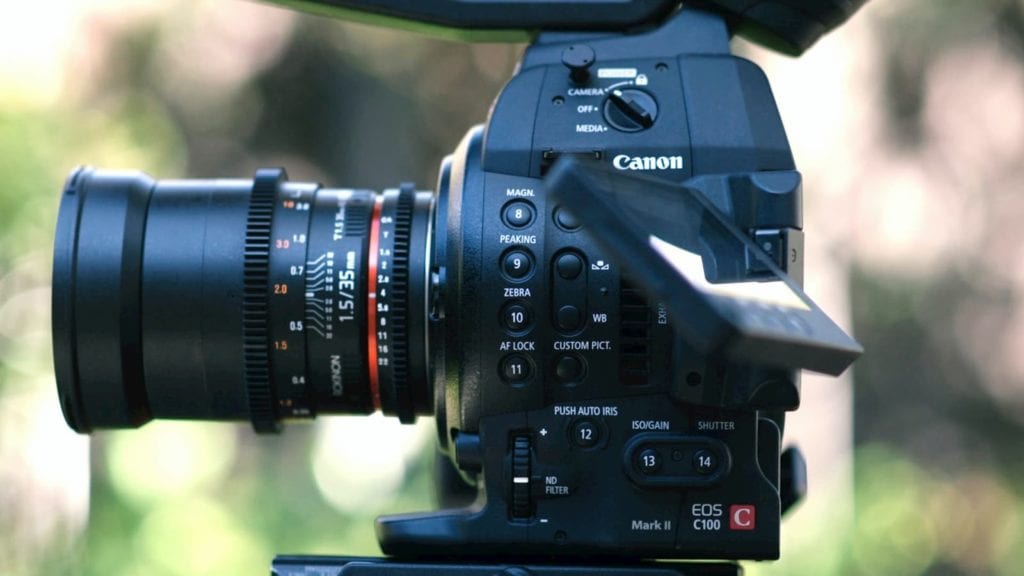
The camera, arguably the most important piece to your filmmaking kit, has many filmmakers stressing over it. With constant advancements and upgrades coming out for cameras every year, it may seem like your camera becomes out-dated very quickly.
So, what is the best camera you should get? The best one you can afford.
According to DSLR video shooter, Caleb Pike, you should “by a camera that you can own and not go into debt for. Something that’ll cover 80 to 90 percent of your work. And then for those huge gigs — rent.”
So, in reality, you could begin shooting with your phone, then upgrade to better cameras, and even rent if you have to.
If you’d rather not shoot with your phone and you don’t have thousands of dollars to spend, your best bet would be to start with a DSLR or mirrorless camera with interchangeable lenses.
This would be the best option if you’re working with a tight budget. These types of cameras can still get you the high-quality image you’re looking for.
But if you’ve got a bit of extra money, you may want to consider purchasing a camera better suited for achieving a more professional, high-end cinematic look in your films. Cameras like the Canon EOS C70 or Blackmagic Pocket Cinema Camera would fit into this particular category.
Take a look at some of the more expensive, higher-grade cameras here.
Sometimes purchasing really expensive cameras and lenses isn’t an option for you or you’re production company for every shoot — so you may need to look into film equipment rentals.
Check out this complete guide to renting film equipment for those who’d like to learn more about the renting process.
Now that you’ve got a better idea of the types of cameras you can get, let’s look into some of the camera accessories you may need for your film production.
Lenses
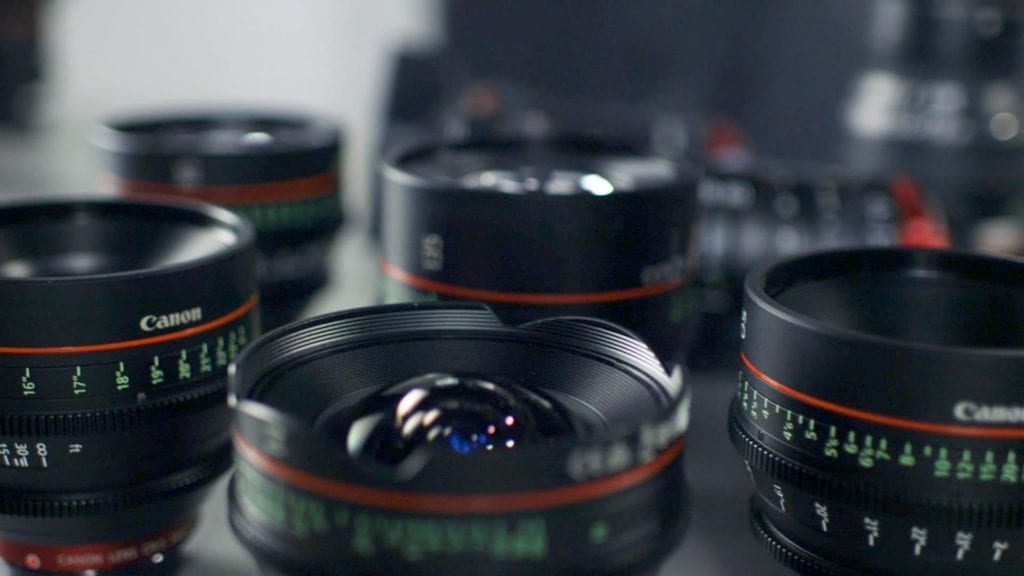
Lenses can be a great investment if you purchase an interchangeable camera, like a DSLR camera. It’s also a good buy if you factor in the possibility of purchasing new cameras down the road.
It’s recommended that you purchase a set of prime lenses if you’re main focus is narrative filmmaking as it will give you the cinematic and high-quality image you’re looking for.
Click here if you’d like to learn more about the best lenses for filmmaking.
However, if you’re looking to save money, you can stick to the kit zoom lens that comes with the camera. It’s not a bad option, especially when you understand that filmmaking is all about technique and not solely about the film equipment you have.
Tripods
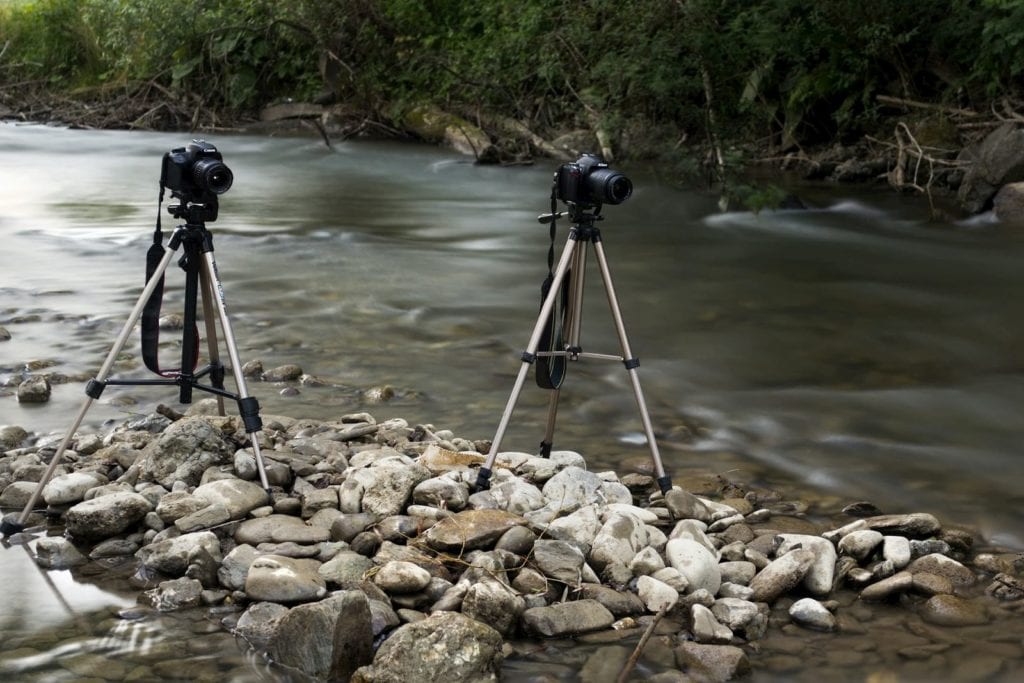
Having a steady image is crucial for maintaining that professional and cinematic look for your film. You don’t want any shaky or slanted shots unless it’s a stylistic choice of course.
A tripod is a piece of film equipment most filmmakers have in their kit, as it allows for smooth pans, tilts, and steady shots.
Click here to look at some of the best tripod systems, as well as some of the best-budgeted tripod systems.
And depending on the demands of your film, you may need to look into other forms of camera stabilizers. There’s the gimbal stabilizer which is used for keeping moving and continues shots steady. There are also jibs that can be used for clean and steady vertical camera movements.
Sound and Audio Equipment
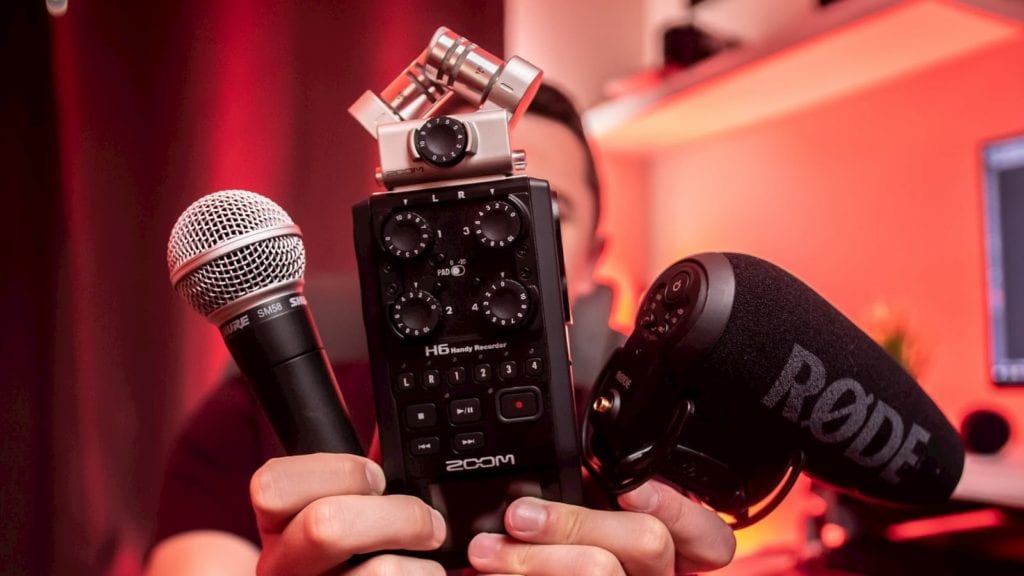
A lot of experienced filmmakers and professionals argue that sound is more important than having the best-quality image.
Having poor sound can easily take your audience out of your film. So it’s important you take the sound department as seriously as the others.
Unfortunately, the microphone in your camera is not going to cut it. So you’re going to need to look into external microphones — such as shotgun and Lavaliere microphones.
Shotgun microphones are great for capturing crisp sound as it has an extremely long and narrow pick up pattern. It’s a directional microphone that will focus on the subject you’re trying to record.
Lavaliere microphones are great for dialogue scenes as they can be clipped or tapped onto your talent’s chest. Having the mic in close proximity to your subject will allow for very sharp sound.
And lastly, once you have a solid microphone, you’re going to need to record it. To do this, you’ll need an audio recorder. This piece of film equipment records all the sound captured from your microphone.
Click here for a list of the best and affordable microphones and audio recorders.
Lighting Equipment
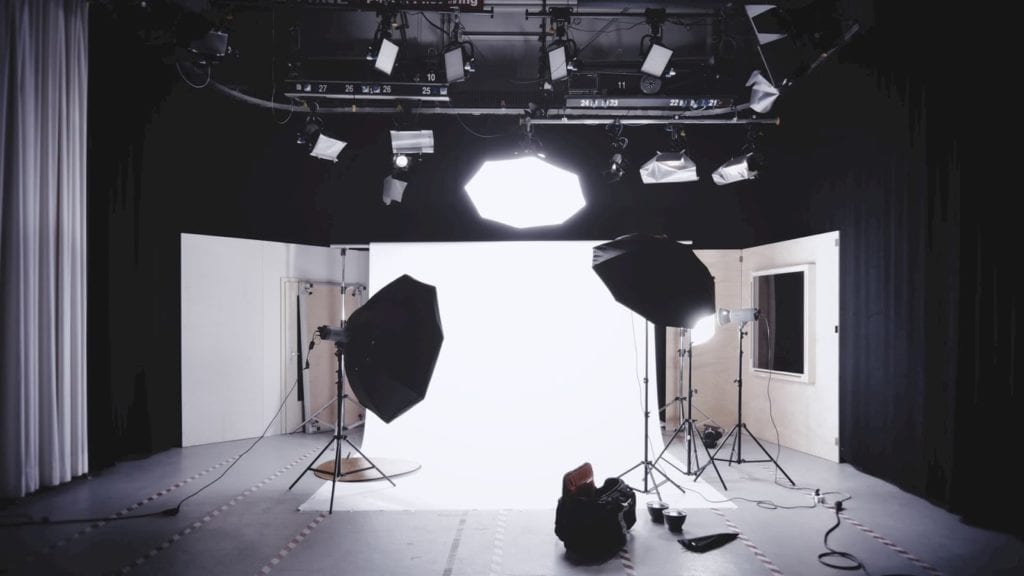
Lighting is a very important and significant component of filmmaking. It’s what helps build tone, mood, breathtaking scenery, and more. It’s what separates the amateurs from experienced filmmakers.
Of course, lighting can be very situational and can entirely depend on the type of film you’re looking to make. Is your film set inside or outside mostly? What genre of film are you creating? What is the production design of your film?
These are the questions that can drastically determine lighting setups and how much planning needs to go into it.
If you’re unsure of what lights to get for your film production, you should take some time and learn about the different lights used in film — such as LED lights, tungsten lights, fluorescent lights.
If you’re looking for a more budget-friendly lighting kit, you should look into purchasing LED lights. Although there are more advanced and expensive LED lights, there are plenty of low-budget options available.
Take a look here for some budget-friendly lighting kit options.
Also, don’t forget about reflectors. These can be very useful for enhancing the effect of lighting in many scenarios.
Conclusion
Hopefully, we’ve painted a better picture of some of the essential film equipment used in productions.
You may run into a filmmaker that claims you need this and that for your film production, but the truth is, it depends entirely on the type of film you’re planning to produce. A major variable for deciding film equipment is the budget of your film.
Your budget and the film equipment you may already own will determine the type of equipment you’ll use onset. However, your film equipment will constantly be changing as you build more and more experience as a filmmaker.
Check out our blog on film budgeting to learn more about how a budget is determined and how it’ll affect your film overall.
How To Budget Your Film
Again, as you grow as a filmmaker, you will see growth in your film equipment kit. After you shoot various film projects, you will quickly learn what pieces of film equipment you’ll need and won’t need.
Also, when you begin to hire crew members — such as cinematographer, gaffer, or audio recordist — they may have equipment of their own, and you’ll be able to learn what film equipment may work best for them and your film productions overall.
Check out our blog on finding crew members if you’re interested in learning more about ways to find and assemble a solid film crew.
If you or someone you know needs funding for a film, check out our funding opportunities for the chance to win up to $10,000 in funding for your project.